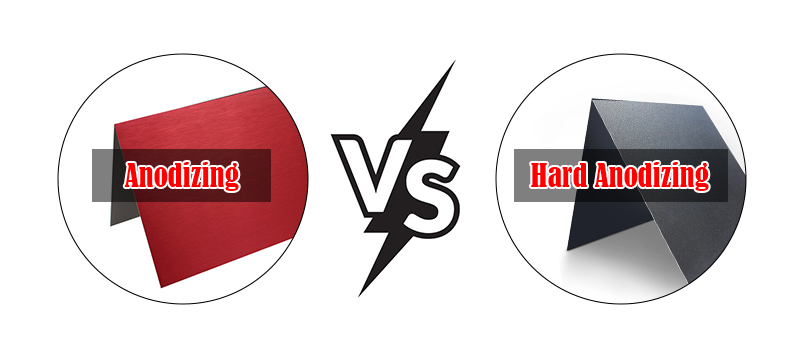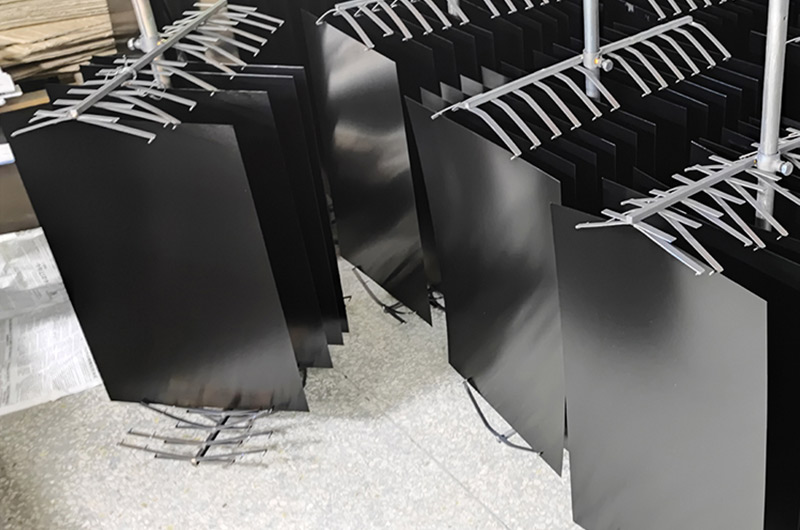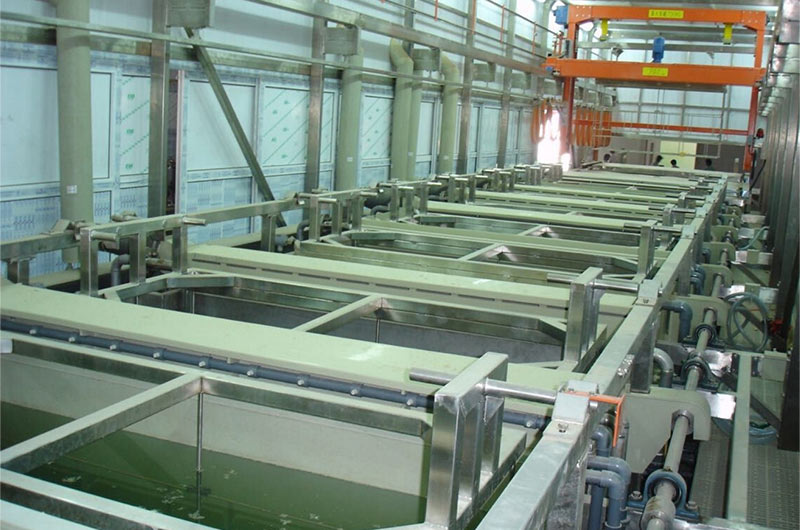Anodizing vs Hard Anodizing
Updated : Jan. 18, 2024The anodization of most aluminum plates commonly falls into two types: Type II (or "conventional") sulfuric acid anodizing and Type III hard anodizing.
The nomenclature of Type II and Type III originates from the military specification MIL-A-8625, serving as the specification foundation for military and aerospace products.
Type III anodizing is accomplished at lower temperatures, making it more expensive than Type II, and results in a harder surface. The Type III anodized layer is significantly thicker than that of Type II, imparting enhanced wear resistance and corrosion resistance.
Next, Chalco will lead you to explore the differences between Anodizing vs Hard Anodizing from six different perspectives.

Anodizing vs hard anodizing color difference
Although Type III hard anodization can be dyed, the resulting colors tend to be darker than those produced by Type II regular anodization. In most cases, black is the color of choice for hard anodizing customers. And ordinary anodizing can be dyed into almost any color.
Hard anodizing requires an additional sealing step after staining. Sealing reduces the wear resistance of the coating.

The difference between anodizing vs hard anodizing process
Differences in electrolyte temperature
The electrolyte temperature for regular anodizing is relatively higher, typically in the range of 18-22°C.
In contrast, the electrolyte temperature for hard anodizing is lower, generally below 5°C. Generally, a lower electrolyte temperature results in a harder anodized film.
Differences in electrolyte concentration
The electrolyte concentration for regular anodizing is typically around 20%.
For hard anodizing, the electrolyte concentration is relatively lower, around 15% or even lower.
Differences in current and voltage
The current density for regular anodizing is generally in the range of 0.8-1.3 A/dm, with voltage typically around 20V.
Hard anodizing involves higher current density and voltage, with current density ranging from 2-5 A/dm and voltage reaching up to 100V. Hard anodizing often employs a method of gradually increasing voltage, which is not necessarily required in regular anodizing.
Differences in solution type
Standard anodizing can be carried out in chromic acid or sulfuric acid electrolytes, while hard anodizing typically uses sulfuric acid solutions or sulfuric acid with the addition of organic acids (such as oxalic acid or sulfamic acid).

The difference between anodizing vs hard anodizing oxide film
Differences in film thickness
The regular anodized film is relatively thin, while the hard anodized film generally has a thickness exceeding 25μm. An increase in thickness may impact the dimensional tolerances of the aluminum sheet, especially when strict tolerances are required.
Differences in surface
The surface of regular anodization is smooth, exhibiting high flatness.
In contrast, the surface of hard anodization is rougher, with slightly lower flatness.
Differences in pore size
Regular anodization tends to have a higher pore size, whereas hard anodization has a lower pore size.
Differences in film transparency
The regular anodized film is typically transparent, while the hard anodized film, due to its thickness, is opaque.
Anodizing vs hard anodizing performance is different
Differences in hardness
Regular anodized aluminum typically exhibits a hardness of around 180-270 HV.
Hard anodized aluminum, driven by functional requirements, demands a hardness ranging from 310-550 HV.
Differences in wear resistance
The wear resistance of hard anodized films is generally 1-2 times higher than that of regular anodized films (except for 2xxx series alloys).
Differences in electrical insulation
Both types of anodized films are non-conductive, with the breakdown voltage of hard anodized films reaching 2000V or more.
Differences in corrosion resistance
Hard anodized films demonstrate stronger corrosion resistance compared to regular anodized films, making them more resistant to salt spray tests.
Additionally, the corrosion resistance of hard anodized films can be further improved by adding substances like paraffin wax and mineral oil. However, it's worth noting that hard anodized films are more prone to microcracks.
Differences in heat resistance
The melting point of hard anodized films is 2050°C, resulting in better heat insulation compared to regular anodized films.
Differences in mechanical properties
Hard anodization generally does not impact the mechanical properties of aluminum sheets.
However, it may lead to a reduction in the ductility and fatigue strength of the aluminum sheet, with a greater impact observed as the film thickness increases.
Anodizing vs hard anodizing application differences
Regular anodizing offers both aesthetic appeal and functionality. Its appearance makes it widely popular in architectural applications such as exterior panels, window frames, automotive bodies, computer casings, etc. Regular anodizing also enhances the corrosion resistance and wear resistance of machine parts, extending their lifespan.
Hard anodizing, on the other hand, is a thicker, less porous surface treatment that often features a deeper color appearance, making it less suitable for decorative surface finishes.
However, its high durability, wear resistance, and insulating properties make it well-suited for applications in aerospace, automotive components, high-speed machine parts, defense equipment, firefighting equipment, power facilities, and more.
In summary, regular anodizing is suitable for primarily decorative purposes, while hard anodizing is geared towards functional applications requiring wear and corrosion resistance.

Anodizing vs Hard anodizing the difference in energy consumption and cost
Compared to regular anodizing, hard anodizing requires higher current and voltage, along with longer processing times, resulting in increased energy consumption and costs.
Additionally, hard anodizing imposes more stringent control requirements on process parameters.
If you are still uncertain about which anodizing treatment to choose, please feel free to contact Chalco for professional support.
As an experienced anodizing manufacturer, we possess abundant expertise in aluminum plate surface treatments, ensuring that we provide you with the optimal solution.




